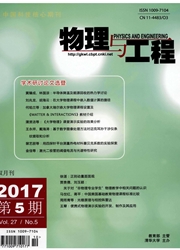

 中文摘要:
中文摘要:
目的探讨ALT检测在血液安全筛查中的意义。方法采用前瞻性研究方法筛选出ALT单项首次检测阳性的无偿献血者。追踪分析其重复献血的血液检测结果。结果2010~2011年955例单项ALT阳性的献血者中,再次参加献血者476例。其中。HBsAg、Anti—HCV、Anti—HIV、梅毒抗体及ALT 5项均阴性者347例;不存在ALT合并其他4项传染病阳性的献血者中,ALT单项阳性者129例;重复献血1次者256例,其中ALT阳性者42例;重复2次及以上次献血者220例,其中ALT阳性者87例;油腻饮食、烟酒、疲劳、睡眠不足等非病理性因素是引起ALT升高主要原因。结论尚未发现ALT为血液检测带来任何帮助;在献血者的招募工作中,建议对2次以上ALT均不及格的献血者,需要加强健康征询干预,或者采取献血前进行ALT初筛的策略。
 英文摘要:
英文摘要:
Objective To discuss the significance of alanine aminotransferase (ALT) test in blood safety screening. Methods The blood donors who tested ALT positive single for the first time were filtered by the prospective study method, the blood test results of repeated blood donations was tracked and analyzed. Results Four hundred and seventy-six donors took part in blood donation once more in the 955 cases of single ALT-positive donors during 2010-2011. There were 347 cases in which the 5 detections of HBsAg, Anti-HCV, Anti-HIV, syphilis antibodies and ALT were all negative; ALT single posi- tive were 129 eases, in which there was no ALT merged four other infectious diseases positive. 256 cases repeated donate blood one time, and in which ALT-positive single were 42 cases; 220 cases repeated donate blood multiple, and ALT-pos- itive single were 87 cases. The non-pathological factors of greasy food, alcohol and tobacco, fatigue and lack of sleep were the main causes lead ALT to rise. Conclusion ALT test bring any help yet in blood safety screening. We recommended that health consult intervention should be strengthen, or take the strategy of ALT screening before blood donation in the re- cruitment of blood donors to the donor whose ALT test are not disqualified in 2 times more.
 同期刊论文项目
同期刊论文项目
 同项目期刊论文
同项目期刊论文
 期刊信息
期刊信息
